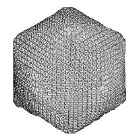Plant Pathology, Department of

James Van Etten Publications
Document Type
Article
Date of this Version
2015
Citation
Virology 479-480 (2015) 38–45
doi 10.1016/j.virol.2015.02.025
PMID: 25766639
Abstract
Many large DNA viruses that infect certain isolates of chlorella-like green algae (chloroviruses) are unusual because they often encode a diverse set of membrane transport proteins, including functional K+ channels and aquaglyceroporins as well as K+ transporters and calcium transporting ATPases. Some chloroviruses also encode putative ligand-gated-like channel proteins. No one protein is present in all of the chloroviruses that have been sequenced, but the K+ channel is the most common as only two chloroviruses have been isolated that lack this complete protein. This review describes the properties of these membrane-transporting proteins and suggests possible physiological functions and evolutionary histories for some of them.


Comments
(c) 2015 Elsevier Inc.
Access via Pub Med